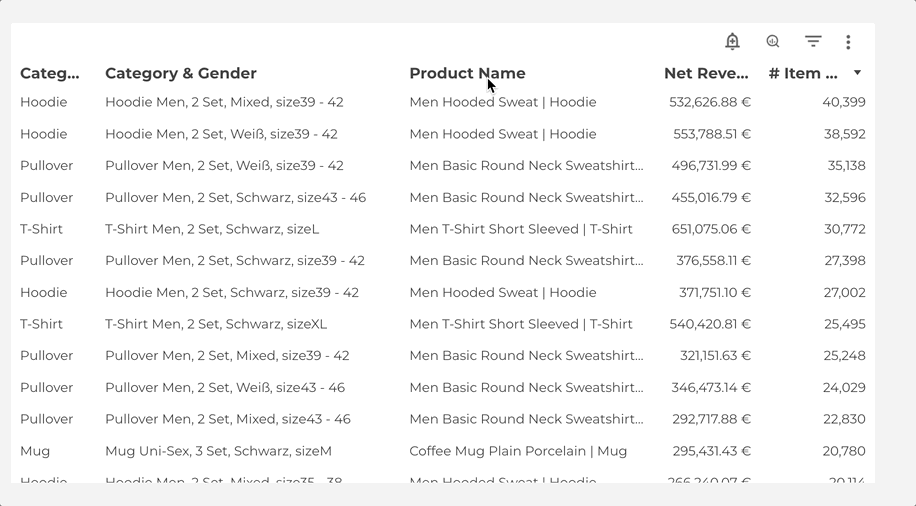
Designing a dashboard involves more than just arranging data—it's about creating a visual experience that enhances understanding and usability. One of the most powerful tools at your disposal is color. The right color scheme can help users navigate information intuitively, highlight critical insights, and reinforce your brand identity. Here’s a comprehensive guide to help you choose the perfect color theme for your dashboard.
1. How Do You Assign Color to the Dashboard?
Understand the Purpose of Your Dashboard
Before choosing colors, clarify the primary purpose of your dashboard. Is it to provide an overview of key metrics, highlight anomalies, track progress, or something else? The purpose will influence how you use color to convey information.
Colors have context
Before diving into color schemes, it’s crucial to understand that colors carry cultural, psychological, and contextual meanings. For example, while red can signify urgency or danger in some cultures, it may represent luck or prosperity in others. Consider your audience and the message you want to convey when selecting colors.

Use colors to connect information
Use color strategically to group related data or categories. For instance, using shades of blue for financial data and green for operational metrics can visually separate different types of information while maintaining coherence. (Note: the illustration below is completely made up and does not represent any real values or data).

Use color to draw attention
Highlighting important data or alerts can be achieved by using contrasting colors. A bright color against a muted background can immediately draw the eye to critical information, guiding users to what needs their attention most.

Use color to convey a message
Colors evoke emotions and associations. For example, blue often conveys trust and stability, while yellow is associated with optimism and energy. Use these associations to reinforce the message your data is conveying.

2. Types of Color Schemes
When choosing a color scheme for your dashboard, consider different types:
Monochromatic
Variations of a single hue. This scheme is harmonious and creates a soothing visual effect, suitable for conveying a unified message.

Complementary
Colors opposite each other on the color wheel. This scheme creates high contrast and draws attention, making it ideal for highlighting key data points or calls to action.

Triadic
Three colors equidistant from each other on the color wheel. This scheme offers a balanced contrast while maintaining harmony, suitable for displaying multiple categories or themes.

Gradient
Transitioning between hues smoothly. Gradients can add depth and visual interest to your dashboard, guiding the eye along a continuum of data.

3. Choosing Text Colors
Text legibility is paramount in dashboard design:
Ensure sufficient contrast between text and background colors to maximize readability, especially for small font sizes or for users with visual impairments.
Use dark text on light backgrounds or vice versa to prevent eye strain and ensure clarity, particularly in charts and graphs where data interpretation is key.

4. Aligning with Brand Colors (or Suggesting Color Schemes)
If your organization has established brand colors:
Integrate these colors into your dashboard to reinforce brand identity and maintain consistency across all platforms.
For new brands or projects without established colors, suggest color schemes that reflect the intended brand personality. For example, earth tones for a nature-inspired brand or vibrant colors for a youthful and energetic audience.
The easiest way to extract brand colors from a website is through Image Color Picker:
- Take a screenshot of the website.
- Save the screenshot to your files.
- Go to Image Color Picker.
- Upload the screenshot of the website.
- And there you have it—a color palette from the brand!
5. Dashboard examples to choose the color palette for your dashboard
1. Monochromatic Color Theme Dashboard

2. Complimentary Color Theme Dashboard

3. Triadic Color Theme Dashboard

4. Gradient Color Theme Dashboard

Conclusion
Choosing the right color theme for your dashboard is more than just a stylistic decision—it’s a strategic choice that can significantly enhance user experience and data comprehension. By understanding the role of colors, selecting appropriate color schemes, and ensuring readability, you can create dashboards that are both visually appealing and functional. Start applying these principles today to make your dashboards more effective and engaging.
Other blog posts from datadice
Google Data Analytics Updates June 2024
Enhance user experience in Power BI
Further Links
Follow us on LinkedIn for insights into our daily work and important updates on BigQuery, Data Studio, and marketing analytics.
Subscribe to our YouTube channel for discussions on Data Warehouse, BigQuery, Looker Studio, and Google Tag Manager.
If you are interested in learning BigQuery from scratch, get access to our free BigQuery Course
Elevate your skills with Google Data Studio and BigQuery by enrolling in our Udemy course.
Need help setting up a modern, cost-efficient data warehouse or analytical dashboard? Email us at hello@datadice.io to schedule a call.







